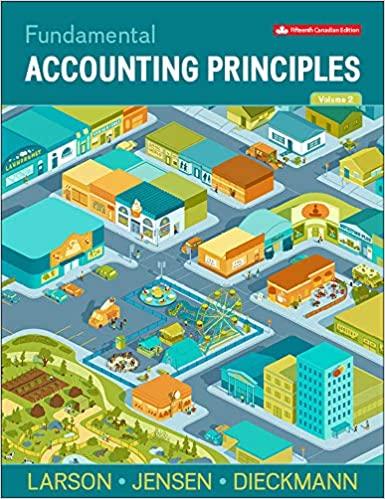Question
2017 Audit of Beta Industries: Summary Information Assume you are an audit manager, today is May 15, 2018, and your public accounting firm is currently
2017 Audit of Beta Industries: Summary Information
Assume you are an audit manager, today is May 15, 2018, and your public accounting firm is currently planning the 2018 financial statement audit of Beta Home Goods, a retailer in the home goods and supply industry. Beta is a public company with a 12/31 year-end, and a new client for your firm. The audit partner has asked you to help plan the audit for this new client using the following information obtained and summarized by the engagement team, and the ratios you will calculate in the multiple choice questions below:
CEO. Sofia Ortega is Betas CEO and chairperson of the companys board of directors. She has been in this position for six years, and previously served as the CEO of a smaller company in the same industry. Her background prior to these top-level executive positions was in lower levels of management at the smaller competitor. Sofia serves as the chairperson of Betas Board of Directors.
CFO. Michael Barkley, CPA, is Betas CFO and a former auditor. He has worked at Beta in various accounting and financial reporting positions for nearly two decades, and has been CFO for six years.
Executive Compensation. In the past, 90% of executive compensation was through a base salary, with 10% dependent on whether the company meets its Basic EPS forecast. Beta has changed the mix this year such that 60% is base salary, with 40% dependent on meeting the basic EPS forecast.
Accounting for investment securities. A material portion of Betas investments is classified as Level 3 assets. Your audit senior offered a friendly reminder that if you dont remember asset classification from your financial accounting courses, a quick web search for Level 3 assets should help you determine if these investment securities are relatively easy or difficult to value.
Allowance for doubtful accounts. An inquiry conducted by the audit senior revealed that Beta has decreased the percentage of credit sales used to calculate the allowance from 6% of credit sales last year to 3% in 2018. The industry average is 6%. The CFO said they made the change because of a projected increase in days outstanding in receivables for 2018 compared to last year.
Acquisitions. Last month, Beta completed the acquisition of a competitor, and the company plans to complete a second acquisition this fall. Your audit team believes the second acquisition is very likely to be completed by the end of this year. Collectively, the acquisitions will double the assets of the company compared to last year (neither of the acquired companies are the previous employer of Betas CEO).
Predecessor Auditor. Beta received unqualified opinions from its predecessor auditor for the ten years. Beta wants to switch auditors because the company wants its predecessor auditor to provide consulting services. The predecessor auditor agrees that this is the reason for the change in auditors.
2017 Audited Financial Statements. See the accompanying Excel file.
Regulatory Environment. Your audit team does not expect significant changes in regulations for Betas industry this year. The industry is not heavily regulated.
Engagement Staffing. Eric Wall, a new staff auditor at your firm who was just assigned to the Beta audit, told you that his mother owns a material (to her) amount of Betas common stock. Eric does not believe this impairs his independence and wishes to stay on the audit.

Analytical Procedures using the 2017 Financial Statements
1. An auditor calculating Betas quick ratio should exclude which of the following item(s) from current assets?
a. Cash and equivalents
b. Inventory
c. Prepaid Expenses
d. B & C only
2. The numerator of Betas receivables turnover is equal to
a. Sixty-four percent of Betas cost of sales
b. Eighty-seven percent of Betas net sales
c. Ninety-three percent of Betas cost of sales
d. Ninety-three percent of Betas net sales
3. An auditor calculating Betas inventory turnover should include which financial statement item in the numerator?
a. Cost of goods sold
b. Inventory
c. Sales
d. Total current assets
4. An auditor calculating Betas current ratio should include which financial statement item in the denominator?
a. Current assets
b. Current liabilities
c. Interest expense
d. Long-term debt
5. Assuming a 360 day year, Betas days outstanding in accounts receivables is __ days.
a. 47.90
b. 48.57
c. 61.55
6. Betas quick ratio is __ %.
a. 0.18
b. 0.30
c. 2.72
7. Betas return on assets (ROA) is __ %.
a. 0.76
b. 1.35
c. 1.84
8. Betas current ratio is
a. 2.35
b. 2.50
c. 2.72
9. Assume Betas usual credit terms are 2/10, net 30. Betas days outstanding in accounts receivables suggests bad debts are likely __ to accounts receivable.
a.Immaterial
b. Material
c. Neither A nor B: Bad debts have no relationship with accounts receivable
10. Betas profit margin, relative to the industry of average of 12%, suggests a __ level of detection risk.
a.Low
b. High
c. Neither A nor B: profit margin is irrelevant to detection risk
11. Betas ROA, relative to the industry average of 4%, suggests a __ level of inherent risk.
a.Low
b. High
c. Neither A nor B: ROA is irrelevant to assessing inherent risk
12.Betas current ratio may be distorted because the company
a. Has not fully depreciated and amortized all of its fixed assets
b. Did not present diluted EPS in its financial statements
c. Likely has a high level of bad debts
Step by Step Solution
There are 3 Steps involved in it
Step: 1

Get Instant Access to Expert-Tailored Solutions
See step-by-step solutions with expert insights and AI powered tools for academic success
Step: 2

Step: 3

Ace Your Homework with AI
Get the answers you need in no time with our AI-driven, step-by-step assistance
Get Started


